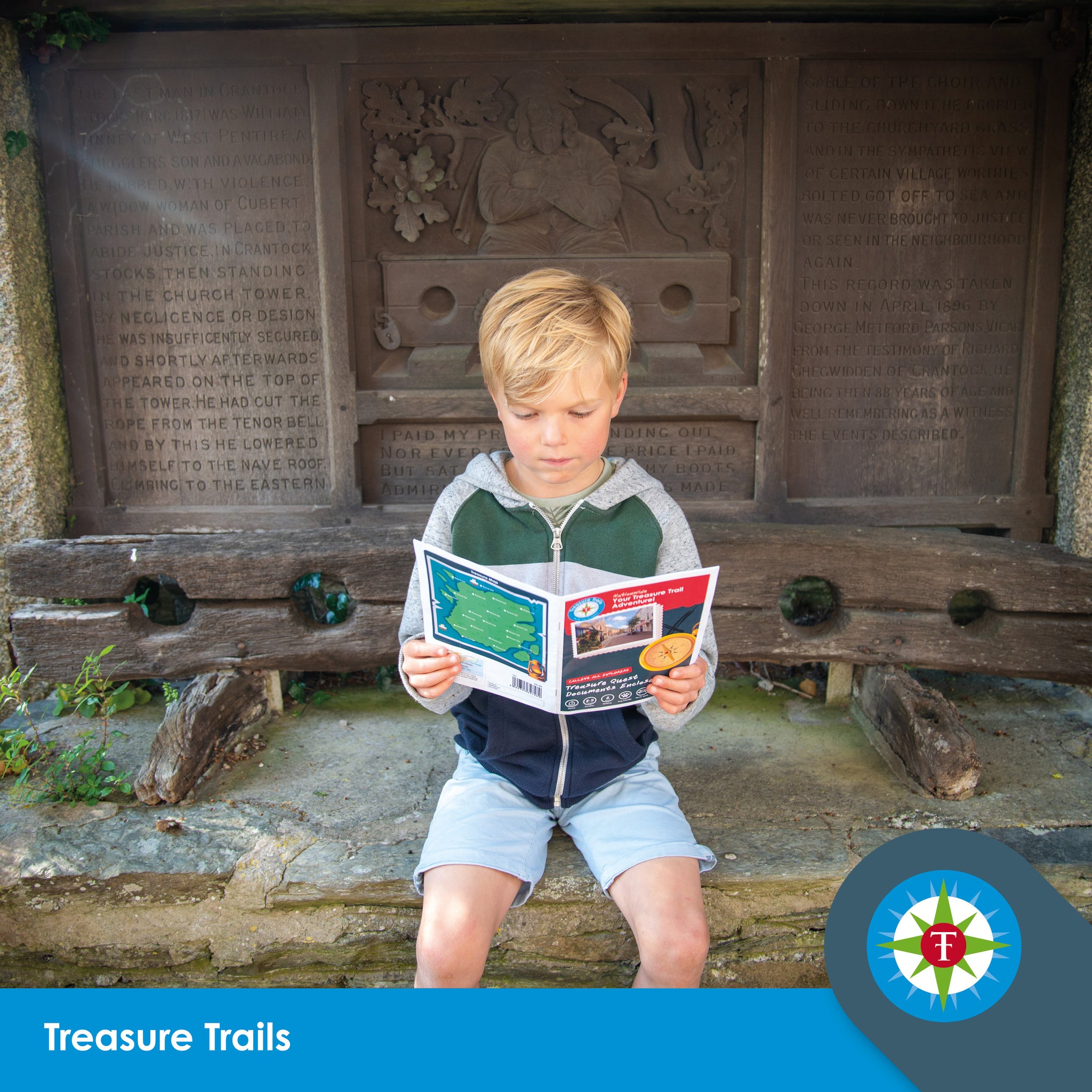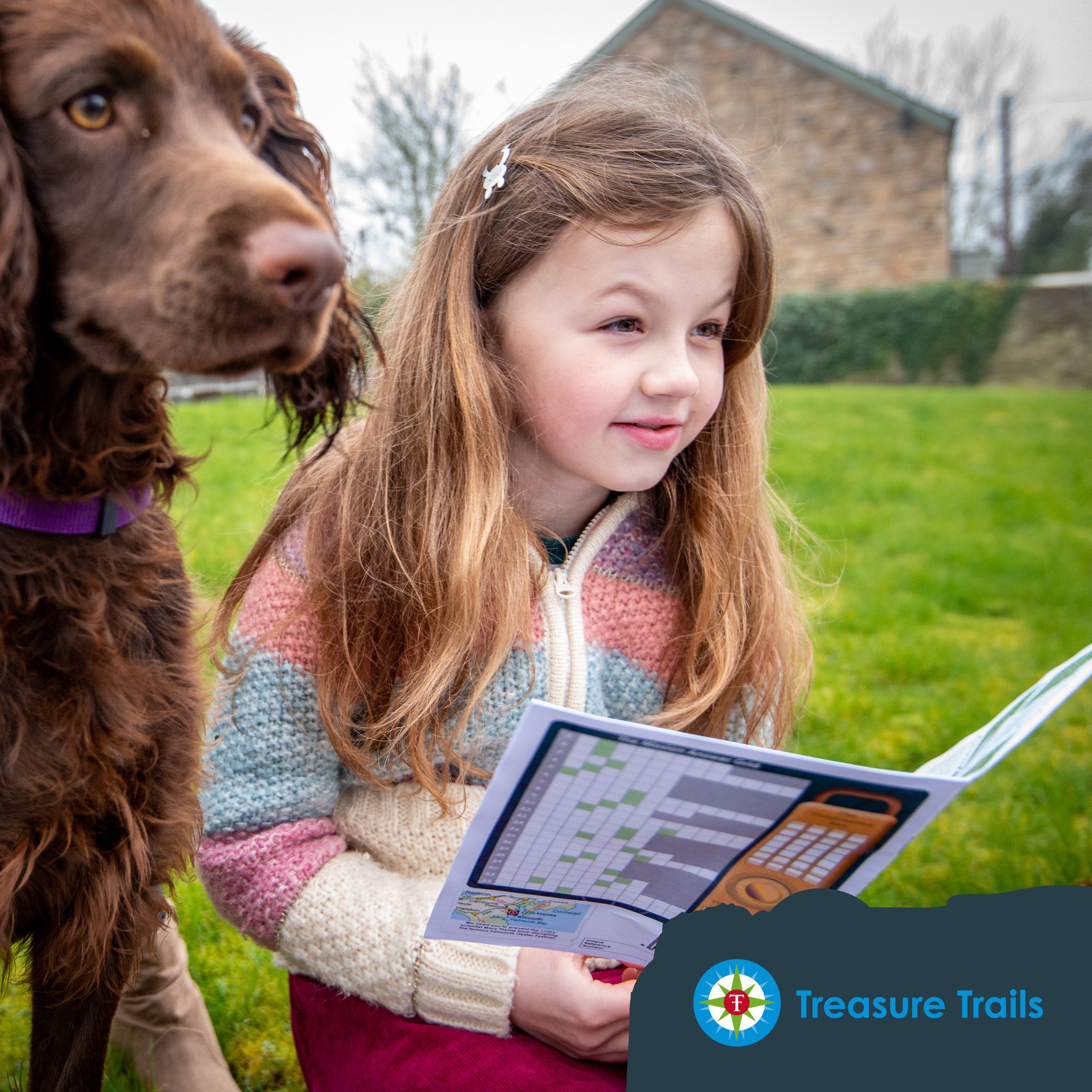Homeschooling with Treasure Trails
Turn a walk into an outdoor learning adventure

Finding outdoor educational activities which are fun, engaging and specific to your local area can be tough. Creating your own local treasure hunt is also time-consuming – trust us, our Trail Writers know just how long it takes to put together a great Trail!
Good news – we’ve done all the work for you! Read on to find out why your local Treasure Trail is an amazing resource for anyone homeschooling or providing learning from home. PLUS, we’ve put together some great ideas for before, during and after your Trail for a full-blown learning adventure!
10 reasons why a Treasure Trail is an awesome homeschooling resource
- A Treasure Trail gets you and the kids outdoors and active in the fresh air – even the most reluctant walker won’t realise they’ve gone two miles by the end of it!
- Exploring outdoors reduces screen time – the Trails take you back to basics with pen and paper.
- Trails provide a real-life, engaging reason for reading – you’ve got to read those sneaky clues carefully to solve them.
- The adventures are sure to spark young imaginations with fun themes and backstories to engage with.
- The Trails allow children to work at their own pace – they’re entirely self-guided and can be done in your own time, so you can let your child take the lead and step in when they need help.
- A Trail adventure can flexibly fit into your timetable, whether you want to do it all in one go or split it up across several days.
- The Trailing activities tick off at least five areas of the curriculum - Literacy, Maths, Geography, History and PE - and maybe even more if you pick one of these Trails.
- Exploring with a Trail inspires an interest in the local area and encourages children to love where they live.
- A Treasure Trail provides a great starting point for many unique educational projects (see below).
- They’re a ready-made resource, so less prep for you!
- Ok, so we’ve got one more – did we mention they’re great fun?
Some tips for how to use your local Trail

Your Trail adventure will be a treasure hunt, spy mission or detective mystery, depending on your location. If you have a few different themes to choose from in your local area, get the kids to try this quiz to see what type of adventurer they are and help you decide which Trail to choose.
Before your adventure
Before you set off in search of the clues, get yourselves into the mood and prepare to immerse yourselves in your chosen theme. For younger kids, download our Mini Club packs for Mini Explorers, Mini Detectives and Mini Secret Agents. For older kids, ask them to develop some ideas about how they should act on their top-secret mission, curious case or perilous quest.
Of course, it’s vital that you’re limbered up for your adventure. Try these themed, fun workouts to get ready!
Dart about, daring detectives!
Be swift and sneaky, slippery spies!
Get prepared for anything, intrepid explorers!
Pre-Trail reading
Once your young adventurers are energised, some pre-Trail reading could come in handy to make sure they’re fully prepared for the task ahead.
If they’re training to be intrepid explorers, How I Became a Pirate (Melinda Long, 2003) and The Explorer (Katherine Rundell, 2018) will spark excitement for their expedition.
Slippery spies will be able to brush up on some vital skills with The Official Spy’s Handbook, while Harriet the Spy (Louise Fitzhugh, 1964) and Spy School (Stuart Gibbs, 2013) will get the young operatives ready for the task ahead.
Finally, budding detectives should bury their heads into The Case of the Missing Moonstone (Jordan Stratford, 2016) or Murder Most Unladylike (Robin Stevens, 2016) to prepare for their upcoming case.

Now that the pre-Trail reading is underway, scan through the Trail beforehand and see if there are any maths sums or other topics you could brush up on before the Trail. For example, some Trails include Roman Numeral decoders that you can do some pre-practice with.
TIP: Make your risk assessment part of your learning plan. All Trails follow publicly accessible lanes, paths and pavements, with warnings within the Trail for other potential hazards. Remind your children of road safety and safety by water or other hazards and that staying safe is more important than rushing to solve a clue.
During your adventure
Ready to make a move? Make sure you’re prepared and have everything you need – information on parking, toilets and places to stock up on snacks are included within the Trails where available.
Ensure you’ve all read the back story and are ready to really immerse yourselves in your roles as secret agents, daring detectives or intrepid explorers.
Now, go and crack those sneaky clues!

More benefits of Treasure Trailing
More good news – just a little bit of exercise has all sorts of physical and mental health benefits to keep those young bodies and minds in tip-top condition and ready for more learning:

After your adventure
Post-Trail ideas
- Write a mission report, case report, or quest debrief. Record what you encountered along the way and the twisting tales you unveiled. You could even tap into your art skills to make them look like proper report documents.
- What happened next? Use creative writing skills to decide what happened to the treasure, criminal or enemy agents after you finished your assignment. Was the crook apprehended? Did the treasure reach its rightful owners? Has the evil genius escaped your clutches?
- Write a review of the adventure. What did you like best or least? You could turn it into a diary entry, create a scrapbook page of your day, or write it by hand as a letter to send to a friend or family member.
- Try conducting a self-assessment. How did you do? Would you make a good detective, agent or explorer? Which were the hardest clues and the easiest? What were you good at and bad at – do you need to brush up on any skills? Would you do anything differently on your next Trail?
Post-Trail projects
- Follow up on some of the local history or other learning points you discovered along the Trail. Let the kids pick things they want to find out more about and get researching.
- Draw a map of the route you followed on the Trail. Annotate it with new discoveries you made and interesting features.
- Take up a Trail Writing project and plan a Trail around your local neighbourhood. Write the story, plan the route, set the clues and then test it on other local homeschoolers or families.

Don’t have a Trail near you but still want to get involved? Check out our Rainy Day Puzzle Compendium or head to the Hidden Treasure area of our website for free virtual Trails, puzzles and ideas. Plus, sign up to our mailing list for new puzzles straight to your inbox!
Treat your inbox
Receive our newsletter on the latest offers and happenings.
You can unsubscribe any time you want.

